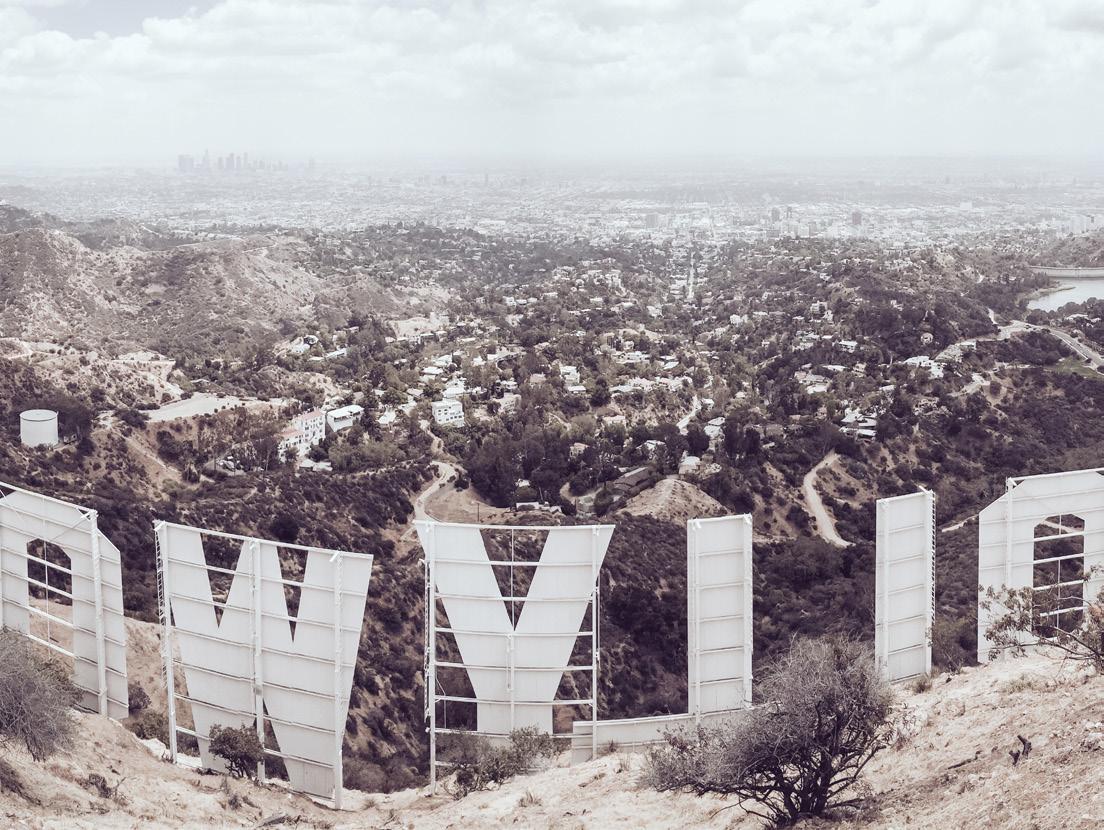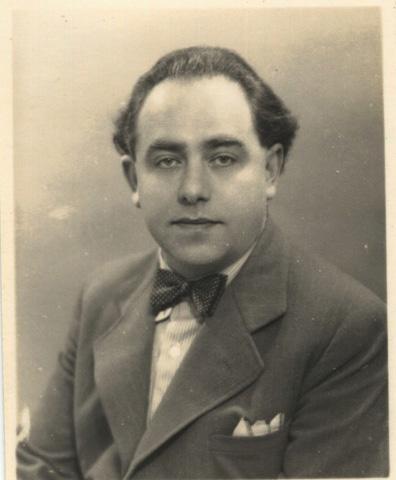
8 minute read
Karin Wagner: Back to the Roots
BACK TO THE ROOTS Karin Wagner
Eric Zeisl’s (1905-1959) time of exile in Los Angeles, which began in 1941, was defined, in the beginning, by the grueling task of composing for the film industry. Born in the Viennese Leopoldstadt and educated in the best of Vienna’s compositional music tradition, Zeisl found himself reduced to being a “technician” in Hollywood; someone whose artistic aspirations could not be achieved due to the huge quantity of film sequences that had to be continuously churned out. Several composers worked on the same film; thus the illustrative musical passages had to be easily swappable and impersonal. Although Zeisl had been able to compose and freely arrange his own compositions in New York in 1940, he subsequently experienced a severe crisis in creativity in 1941. Besides the incidental music to Emil Ludwig’s The Return of Ulysses (1943) Zeisl did not compose a single work other than the film music. Only the year 1944 brought a change by way of his instrumental compositions for piano and organ, and with his Requiem Ebraico, (1944-45) Zeisl was able to end this compositional stalemate. The Requiem is not a liturgical Catholic Latin Mass for the Dead, and the 92nd Psalm, from which it draws inspiration, is also not a dirge per se. Upon Zeisl receiving the news of the death of his father and stepmother, who in 1942 had both been first deported to Teresienstadt and subsequently murdered in Treblinka, Zeisl received a commission to write music for the synagogue service, which took on an entirely new meaning for him: the psalm was composed as a ‘Requiem’, dedicated to the memory of his father and the innumerable victims of the Holocaust. In this composition, Zeisl developed his Hebraic or synagogue style so typical for his years of exile, which had begun in Paris with his incidental music to a staged version of Hiob by Joseph Roth.
Eric Zeisl’s adaptation to music of Jewish rhythm and intonation in absolute or serious music, without specific reference to Jewish subject matter, is distinctive for a cycle of chamber music compositions that begins with the Sonata Barroca for piano (1948-49) and ends with the Second String Quartet of 1953. These works include vital dance elements from the “spirit of Jewish folklore”, as well as the soul of Jewish prayer internalised in the andante movements. Composed in a Classical sonata form, enhanced by rondo and fugal forms, there ensues an enticing mixture of traditional European compositional techniques with new modalities and characteristic intervals in quasiJewish inflection, as well as ostinato technique and recitative-based material. With this fusion of styles, Zeisl established his own personal voice for his compositional style of the 1950s. Among the instrumental works of this period are the Brandeis Sonata (1949-50) for violin and piano, the Sonata for Viola and Piano (1950) and the Sonata for Cello and Piano (1951). “[…] your wonderful Sonata with the dedication which moved me most deeply. I don’t know how to express to you my thanks and feelings. I read it at the piano and found it most beautiful.” Thus wrote Alexander Tansman, Zeisl’s friend in Los Angeles and dedicatee of the Brandeis Sonata, upon receiving the work. Zeisl had completed the Violin Sonata during the summer months of 1950 at Brandeis Camp Institute, where Zeisl had been composer in residence from 1948 to 1950. After the
successful establishment of the first Brandeis Camp at Winterdale, Pennsylvania in 1942, Schlomo Bardin established a second Brandeis Camp Institute on the West Coast, in Simi Valley near Santa Susana, a place for learning and leisure time for 18-25 year-old Jewish men and women. In addition to well-known Jewish representatives from America’s art and music worlds, Eric Zeisl was a most welcome and valued guest there.
During the 1940s, several Jewish organisations were dedicated to the idea of support for music that reflected Jewish subject matter, or a “quasi-Jewish idiom.” European music exiles contributed to these intentions, and agencies of varying profiles helped to establish Zeisl as a Jewish composer.
In an “All Jewish-Palestinian Program […] presented by the Los Angeles League for Labor Palestine” in October of 1943, the Overture and Folk Dance from Zeisl’s incomplete opera Hiob were performed. Another completely different kind of event was the spectacle organised by the Palestine Emergency Fund, That We May Live, in December of 1946, at the Shrine Auditorium in Los Angeles. Whether or not this project was realised is questionable, but it deserves mention because of the abundance and veritable galaxy of stars invited to participate, and that it planned on featuring: Howard da Silva, Marta Eggerth, Bela Lugosi, Jan Kiepura, Erich Wolfgang Korngold, Jacob Gimpel, Hugo Strelitzer and Eric Zeisl (with excerpts of Hiob) were among those named. The Collage was envisioned as a drama in two acts with music, and this rather strange curiosity was to have ended with an epilogue, Before the Gates of Palestine. In reaction to the proclamation of the official State of Israel by the Jewish National Assembly on 14 May 1948, a “Palestine Night” was celebrated under the auspices of the “Carnegie ‘Pop’ Concerts” on 18 May 1948. The concert, held in Carnegie Hall, opened with the Star Spangled Banner and Hatikvah (National Anthem of Israel). Zeisl’s works To The Promised Land, excerpts from Hiob, as well as his arrangement for the Jewish Folksong from Palestine, Kuma Echa Hora, were performed.

Zeisl never actively pursued Zionist ideas, nor did he ever proclaim any cultural or political Zionism. But that he was a part of the musical landscape of American-Jewish art is without question. A special example of Zeisl’s involvement with the idea of Jewish music is manifested in his Brandeis Sonata: the expansive movements of the Sonata in E minor for Violin and Piano in the movements entitled Grave, Andante religioso (hebraique) and Rondo is exemplary of the synthesis of Zeisl’s Viennese tradition with reminiscences from the Jewish sphere. The character of the grave introduction with its insistent Lombardian rhythm, out of which the violin freely rises, is extremely powerful. Above an insistent ostinato accompaniment, an allegretto presents a dancing theme with the raised fourth step in the folkloristic minor key (of E), which Zeisl seems to favour. The contrasting second theme separates itself by way of expressive cantilenas in B minor. The central musical message of the piece is the Andante Religioso, which contains the additional designation of “hebraique,” thus underscoring the gesture of expressive Jewish prayer. Zeisl elevates this movement construction to the norm for most of his second movements during this period: recitativic melodic lines rise above organ pedal points, with ostinato figures related to the lamento, climbing up to the “presence of God”. Zeisl felt this music to be “an
intimate conversation with God”. A vital rondo which, for the sake of unity, harkens back to the rhythm of the introduction, demands a sense of joyful playing and outstanding command of the instruments. Scales, ever-recurring, flashing motifs, and changes in mode all come together to create a world of easternEuropean folk culture, dance-like and rousing, a style that mirrors Zeisl’s temperament, and a mode of expression the composer had already frequently used in Vienna. Zeisl’s wife, Gertrud, wrote to Hilde Spiel shortly before the premiere of the sonata by Yaltah Menuhin and Israel Baker: “Because you did not travel the path we did, everything might seem quite foreign and somewhat strange, yet it is still the same old Eric.”
A “pre-performance” of the Brandeis Sonata took place in Brandeis Camp, given by the Duo BakerMenuhin, followed by the premiere on 24 September 1950 in Santa Monica. In October 1950, the Exile newspaper Aufbau, concerning “New Music in Los Angeles”, stated: “We owe a debt of gratitude to the Duo Yaltah Menuhin (piano) and Israel Baker (violin) for repeated evenings of interesting new music. Both introduced the Sonata in E minor by Eric Zeisl, for which the composer found inspiration during his teaching tenure at the Brandeis Camp near Los Angeles and its pronouncedly Jewish atmosphere. Among the many new works I have heard in recent years, I have never heard a work of such coherence: Each of the three movements is equally strong and captivating. Without quoting any specific, existing Jewish motif, Zeisl wrote truly inspired Jewish music here, which speaks to our contemporary emotions”.

Before his flight from Austria, Zeisl was an important representative of “moderate Viennese modernity”. The National Socialists destroyed his life in his homeland, and put him on the list of forbidden composers. He left Vienna after the November pogrom of 1938. Paris, New York and Los Angeles were the stations of exile. Even though it was his fondest dream, Zeisl never returned to Vienna. When his friend, Hilde Spiel, was sent as a British war correspondent to Austria in 1946, to report for the New Statesman, Zeisl’s longing for his homeland increased to a deeplyfelt pain, which he expresses in a letter of deepseated feelings of sorrow, fragmentation, the feeling of homelessness, love for Vienna, and at the same time disgust for the Nazi crimes: “To be in Vienna in English uniform. I cannot even imagine how one could stand something like that. I think I would be so traumatised that I would fall down dead. It will take a long time for us to get over this. […] I cannot give up on the idea of returning to Europe, even if it were to be at the end of my life.”
Zeisl died unexpectedly of a heart attack at 53 years of age in Los Angeles in February, 1959, after teaching his class at Los Angeles City College. Prior to his death, Yaltah Menuhin and Israel Baker had recorded the Brandeis Sonata for Spa Records. With this recording, Zeisl’s work written in exile has found its way back to his former homeland: the Austrian premiere of the Brandeis Sonata with Johannes Fleischmann and Magda Amara took place in Vienna, in the State Apartments of the Palais Coburg, on 5 May 2018.
Text by Karin Wagner (trans.: Barbara Zeisl Schoenberg ) / Odradek Records, LLC is licensed under a Creative Commons AttributionNoDerivatives 4.0 International License. Permissions beyond the scope of this license may be available at www.odradek-records.com.










